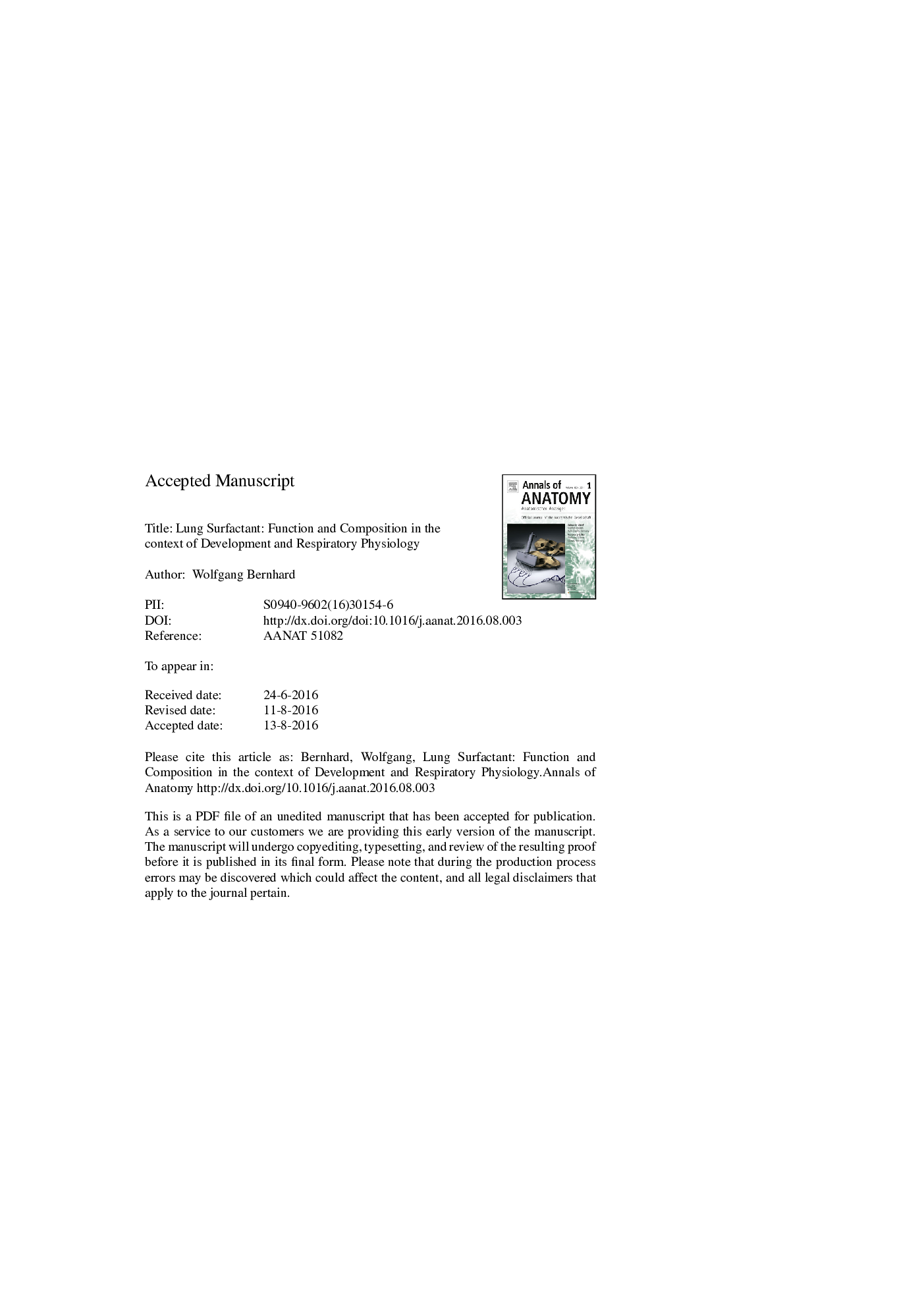| کد مقاله | کد نشریه | سال انتشار | مقاله انگلیسی | نسخه تمام متن |
|---|---|---|---|---|
| 8460614 | 1548988 | 2016 | 18 صفحه PDF | دانلود رایگان |
عنوان انگلیسی مقاله ISI
Lung surfactant: Function and composition in the context of development and respiratory physiology
ترجمه فارسی عنوان
سورفکتانت ریه: عملکرد و ترکیب در زمینه توسعه و فیزیولوژی تنفسی
دانلود مقاله + سفارش ترجمه
دانلود مقاله ISI انگلیسی
رایگان برای ایرانیان
موضوعات مرتبط
علوم زیستی و بیوفناوری
بیوشیمی، ژنتیک و زیست شناسی مولکولی
بیولوژی سلول
چکیده انگلیسی
Lung surfactant is a complex with a unique phospholipid and protein composition. Its specific function is to reduce surface tension at the pulmonary air-liquid interface. The underlying Young-Laplace equation, applying to the surface of any geometrical structure, is the more important the smaller its radii are. It therefore applies to the alveoli and bronchioli of mature lungs, as well as to the tubules and saccules of immature lungs. Surfactant comprises 80% phosphatidylcholine (PC), of which dipalmitoyl-PC, palmitoyl-myristoyl-PC and palmitoyl-palmitoleoyl-PC together are 75%. Anionic phosphatidylglycerol and cholesterol are about 10% each, whereas surfactant proteins SP-A to -D comprise 2-5%. Maturation of the surfactant system is not essentially due to increased synthesis but to decreased turnover of specific components. Molecular differences correlate with resting respiratory rate (RR), where PC16:0/16:0 is the lower the higher RR is. PC16:0/14:0 is increased during alveolar formation, and decreases immune reactions that might impair alveolar development. In rigid bird lungs, with air-capillaries rather than alveoli, and no surface area changes during the respiratory cycle, PC16:0/16:0 is highest and PC16:0/14:0 absent. As there is no need for a surface-associated surfactant reservoir, SP-C is absent in birds as well. Airflow is lowest and particle sedimentation highest in the extrapulmonary air-sacs, rather than in the gas-exchange area. Consequently, SP-A and -D for particle opsonization are absent in bird surfactant. In essence, comparative analysis is consistent with the concept that surfactant is adapted to the physiologic needs of a given vertebrate species at a given developmental stage.
ناشر
Database: Elsevier - ScienceDirect (ساینس دایرکت)
Journal: Annals of Anatomy - Anatomischer Anzeiger - Volume 208, November 2016, Pages 146-150
Journal: Annals of Anatomy - Anatomischer Anzeiger - Volume 208, November 2016, Pages 146-150
نویسندگان
Wolfgang Bernhard,
